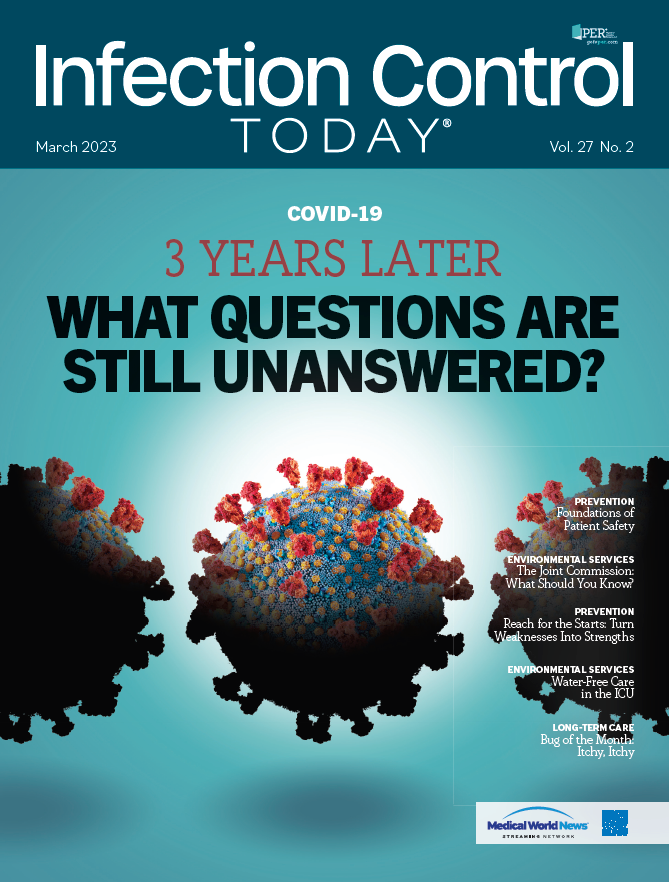Home-infusion therapy (HIT) staff fill a vital role in allowing patients to receive care in their homes. However, the staff often receive little or no formal training on performing central line-associated bloodstream infection (CLABSI) surveillance.
A recent study published in the American Journal of Infection Control reported a lack of training for HIT staff. It also indicated specific training barriers that need to be addressed to improve infection surveillance.
For this study, the investigators performed qualitative interviews of 21 home infusion staff from 5 large HIT agencies covering 13 states and Washington, DC. The questions posed to the staff who all perform surveillance activities focused on their surveillance training, barriers to and facilitators for CLABSI surveillance, and barriers to training in CLABSI surveillance.
Interview Highlights
- A brief summary of the key findings and why they are important. 00:47
- Has the collaborative thought about creating the Infection-Surveillance Training for HIT therapy? 3:58
- What is the practical application of the key findings for infection preventionists from this study? 7:51
- What results surprised you, if any? 13:00
- What, if any, future research will there be related to this one? 14:49
- Is there anything else that you would like to add? 17:30
Sara C. Keller, MD, MSHP, MPH, associate professor at Johns Hopkins University School of Medicine, Johns Hopkins Bloomberg School of Public Health, and lead author of this study, “The Need to Expand the Infection Prevention Workforce in Home Infusion Therapy,” and her Johns Hopkins University associates said educational opportunities need to be highlighted and expanded.
“This paper is based on a series of qualitative interviews with some members of these [home care] agencies, focusing on educational opportunities specifically for home infusion surveillance, or CLABSI surveillance in home infusion therapy,” Keller told Infection Control Today® (ICT®) "And what we saw is that the folks doing this work are working hard, without much access to the training resources that many acute care infection preventionists might have [or] might be able to get access to. They frequently lack a formal surveillance training program. They might be learning how to do home infusion CLABSI surveillance from people who were in the role prior to them and who also did not receive the training resources. Some [home care agency workers] are aware of going to like a conference for that kind of thing. But there's not a great career development or formal training approach for the folks doing this work."
Because HIT involves the administration of medicines through a catheter, specific and careful sterilization procedures must be followed. CLABSIs are infections that can occur when bacteria enter the bloodstream through central line catheters. These severe infections are dangerous; according to the Centers for Disease Control and Prevention, 1 in 4 patients who get a bloodstream infection from having a central line may die. To prevent CLABSI, Keller mentioned in the interview that a checklist is vital to verify that everyone involved is following the same guidelines every time.
The most significant barrier for those individuals performing the home infusions to preventing CLABSIs is the “lack of resources and sometimes the lack of knowledge about what is available to them,” Keller told ICT®. "Particularly if they work for a smaller agency, oftentimes, the folks doing this work are the only person that the agency has done this work. And this is hard work. It's nice to talk to colleagues who have done some of this a little bit, and you learn from them, and they learn from you, and over time, you all gain a broader knowledge base. But they often do this in isolation and don't have as many others to talk to.”
Keller spoke to ICT® previously on home infusion therapy. That interview is here.
Other Authors:
Opeyemi Oladapo-Shittu, MBBS, MPH, CPH; Johns Hopkins University
Susan M. Hannum, PhD;
Johns Hopkins Bloomberg School of Public Health
Alejandra B. Salinas, BS, Johns Hopkins University School of Medicine
Kimberly Weems, MPH; Johns Hopkins Hospital
Jill Marsteller, PhD; Johns Hopkins Bloomberg School of Public Health, Johns Hopkins University School of Medicine
Ayse P Gurses, PhD, MPH, MS; Johns Hopkins University School of Medicine
- Sara E. Cosgrove, MD, MS; Johns Hopkins University School of Medicine, Johns Hopkins Bloomberg School of Public Health, Johns Hopkins Hospital
